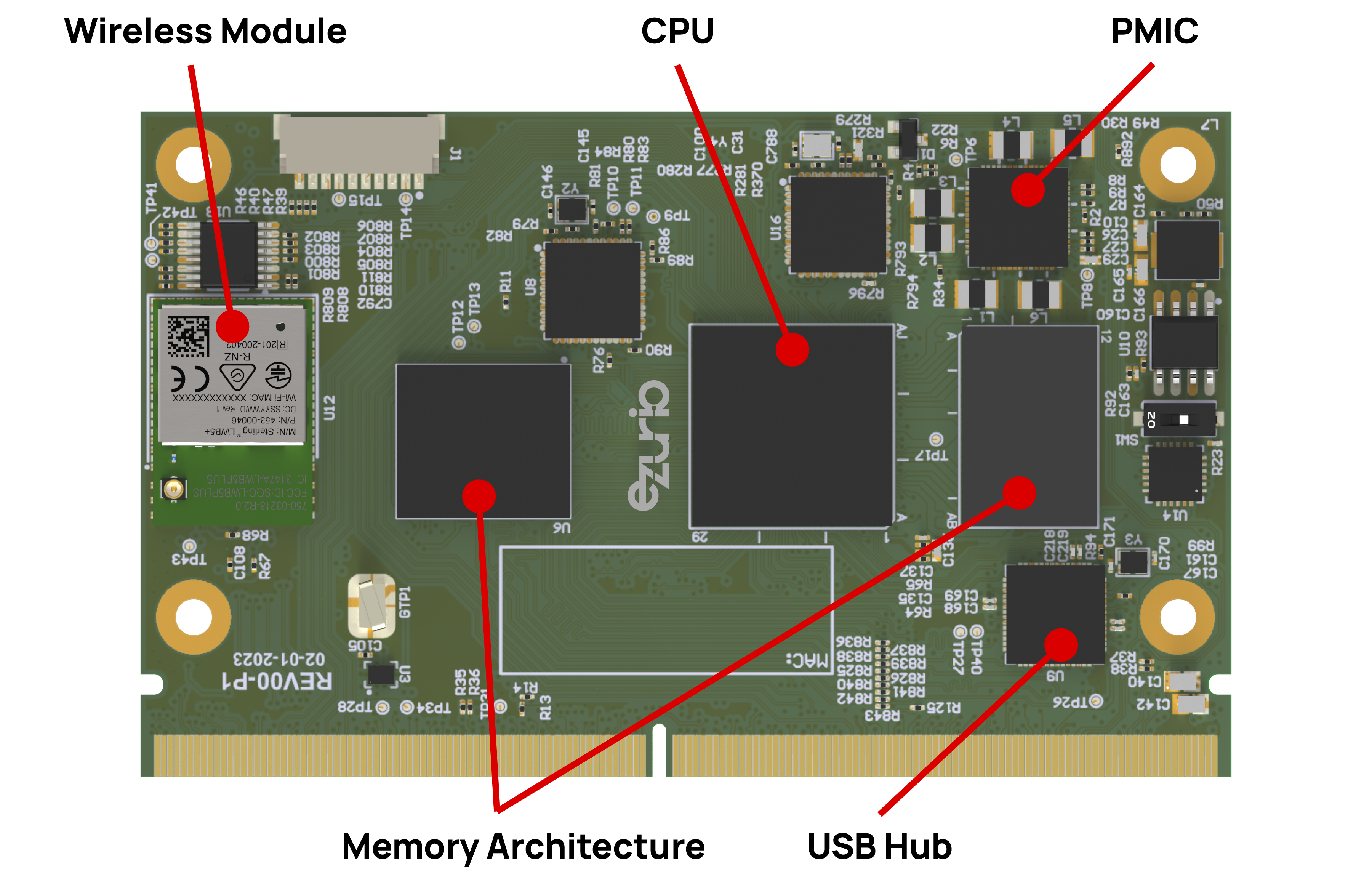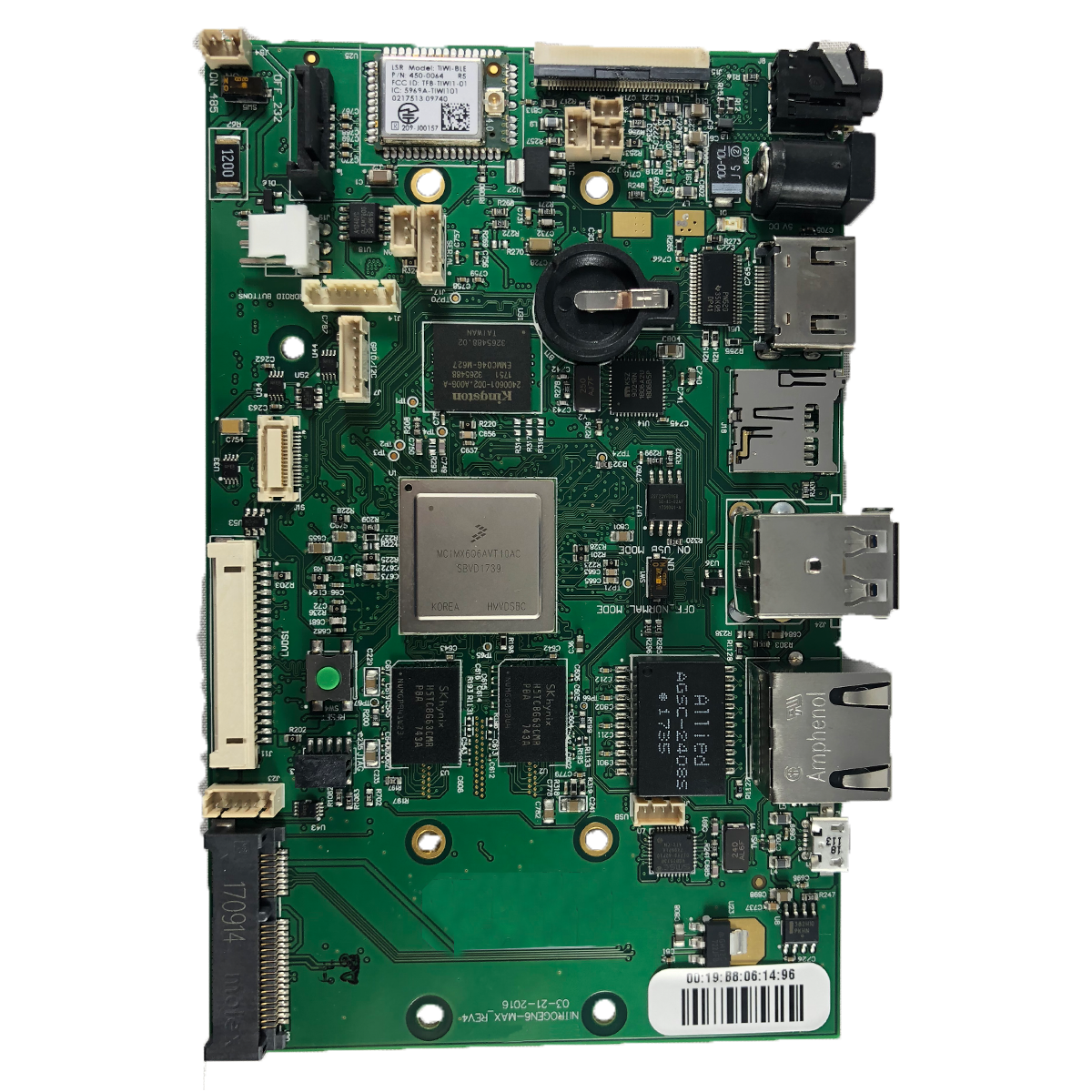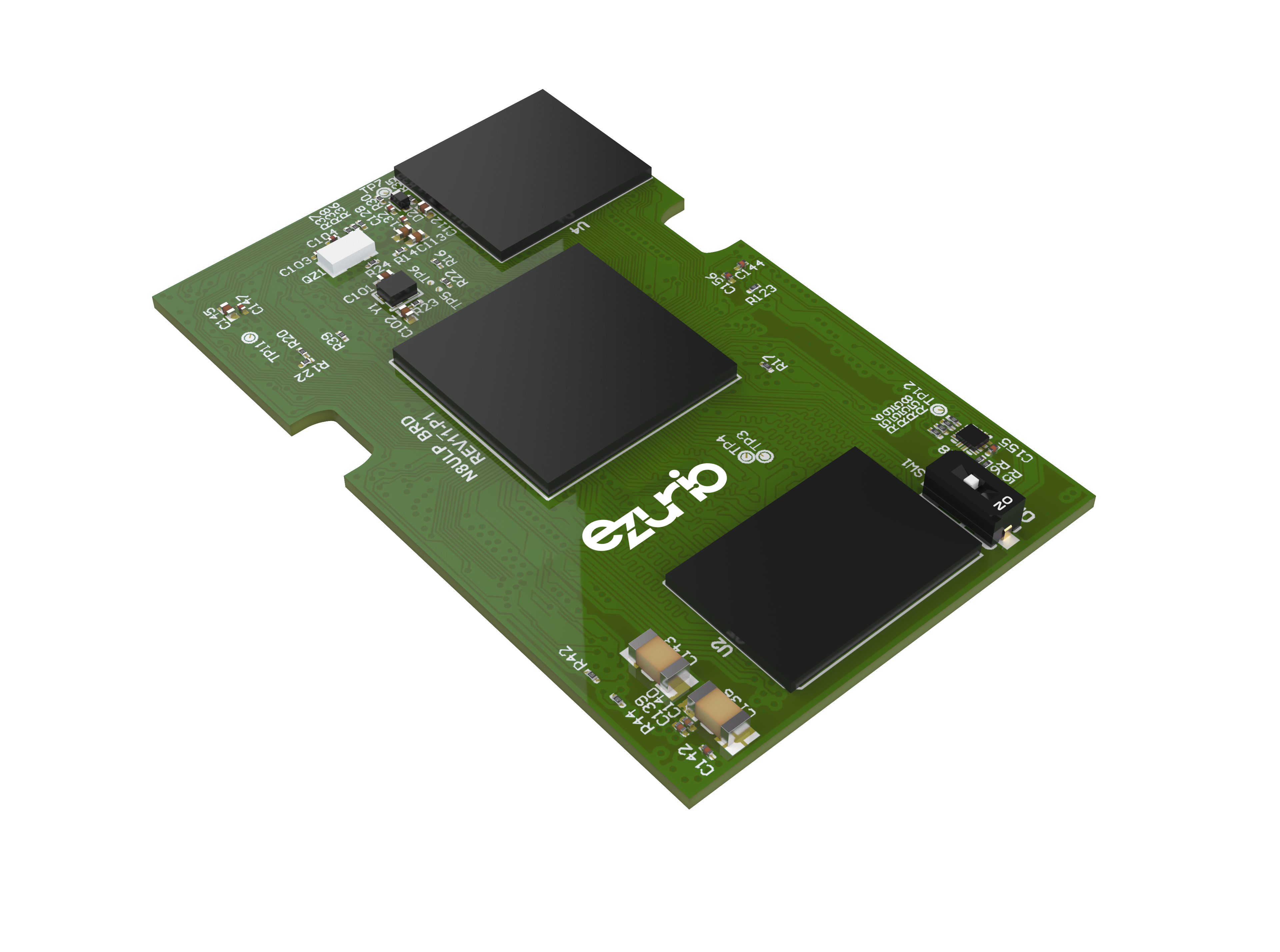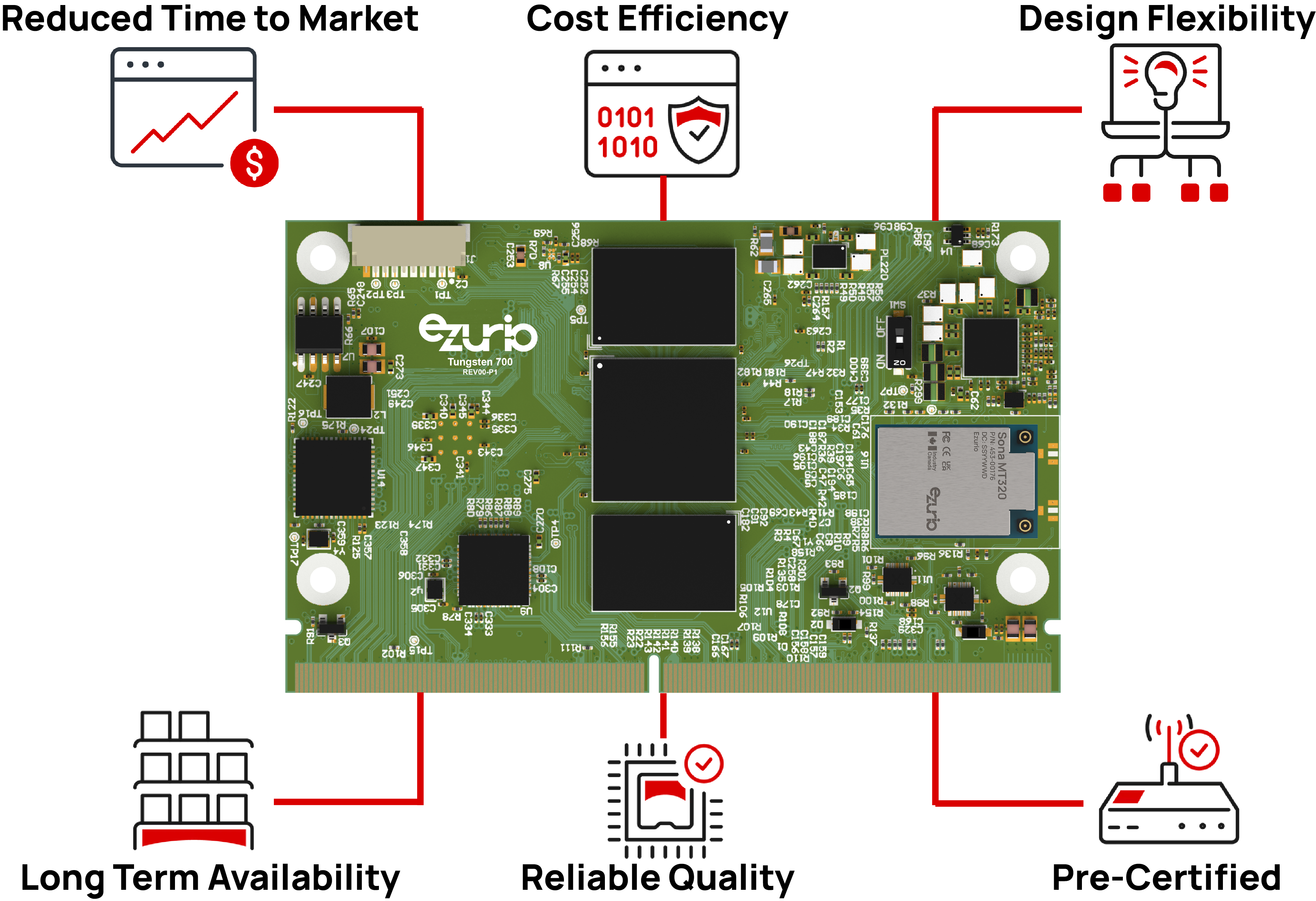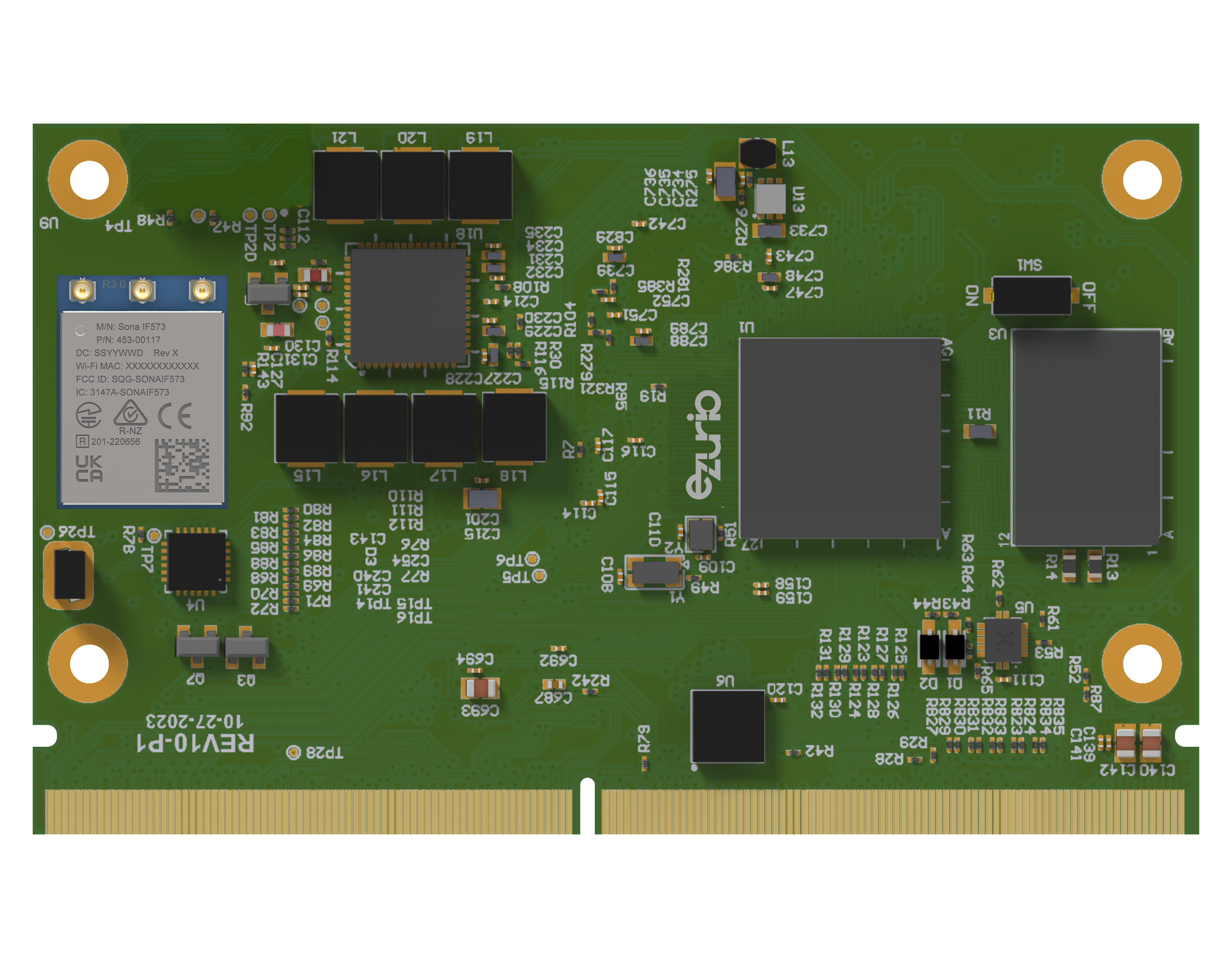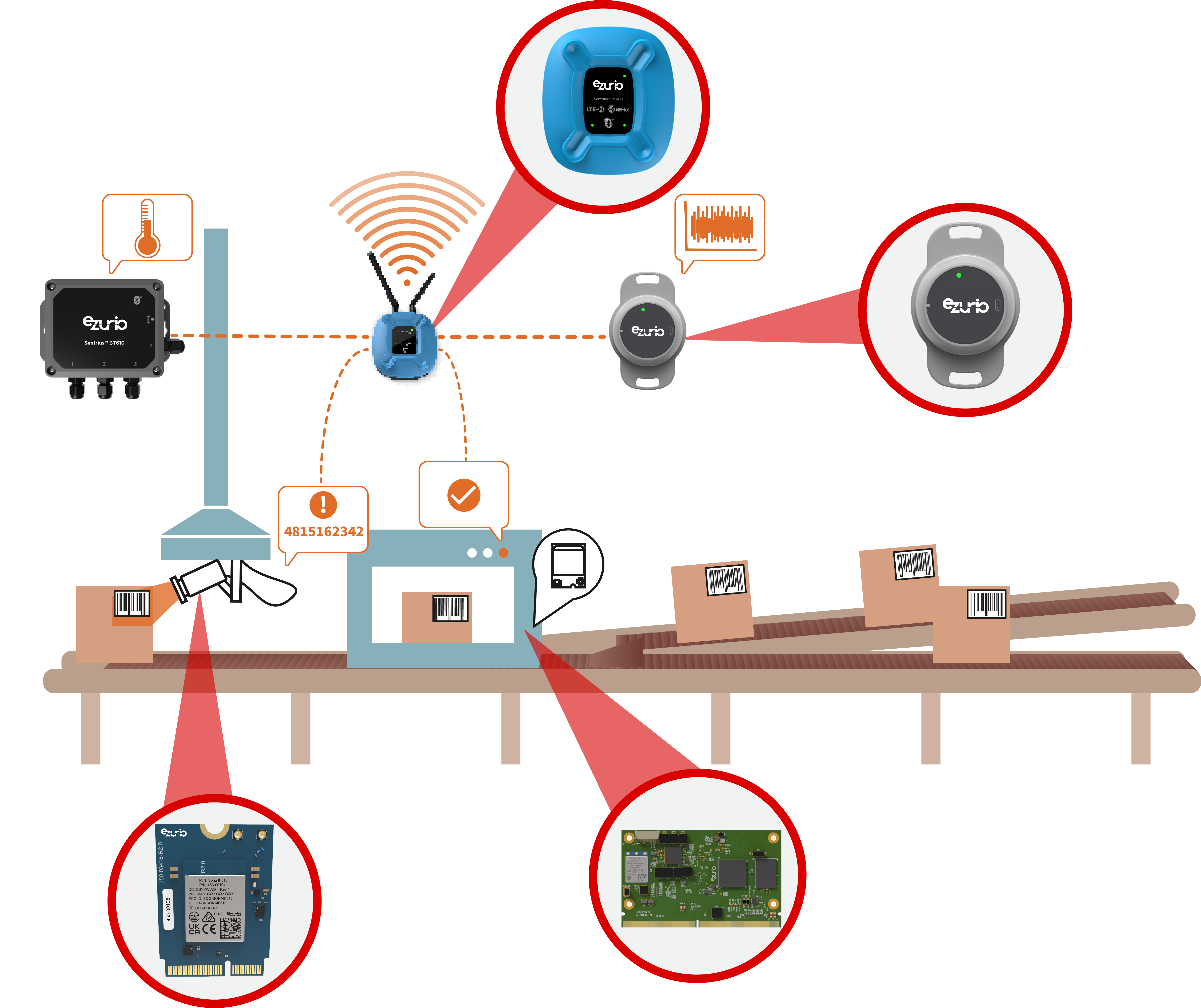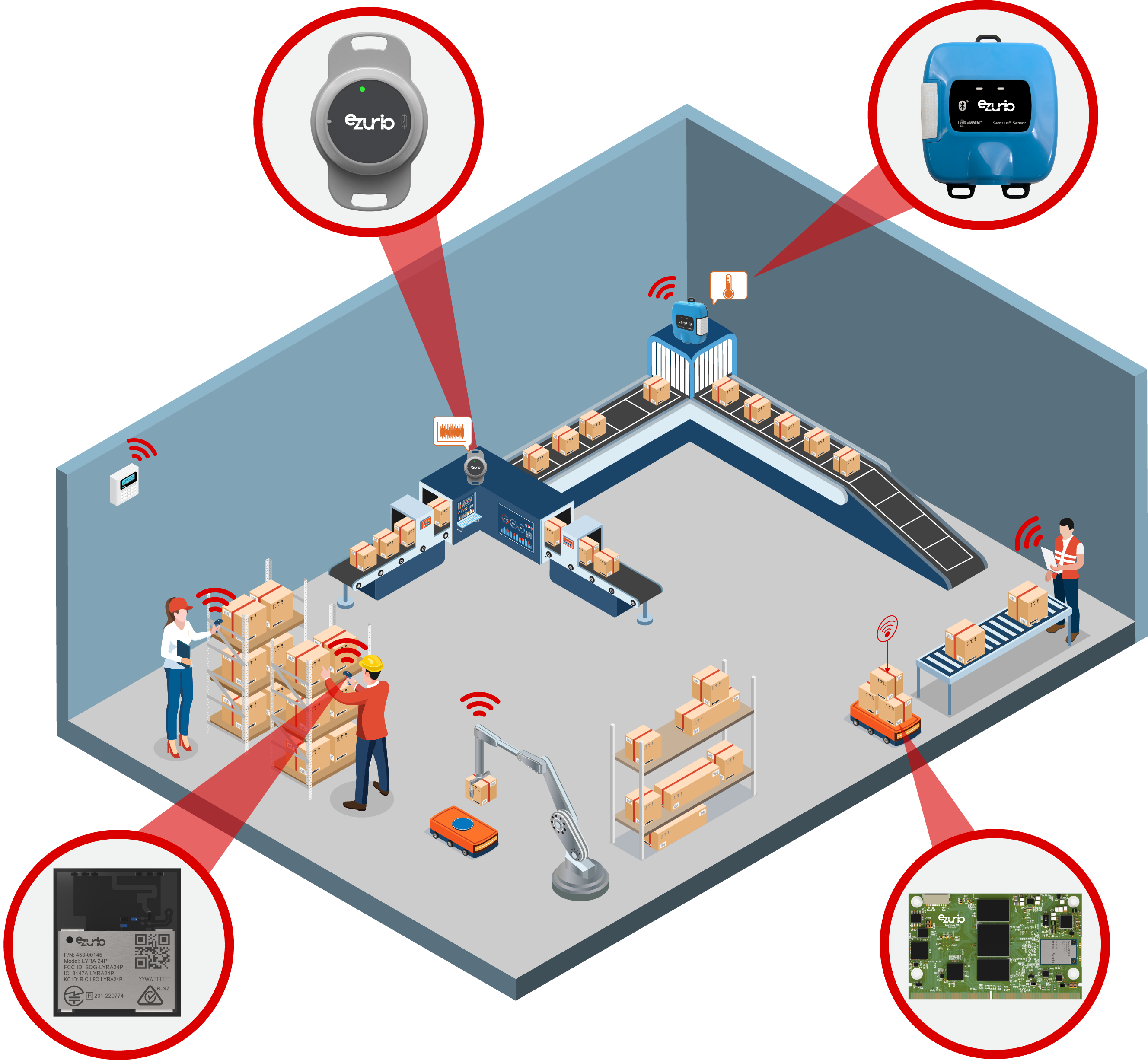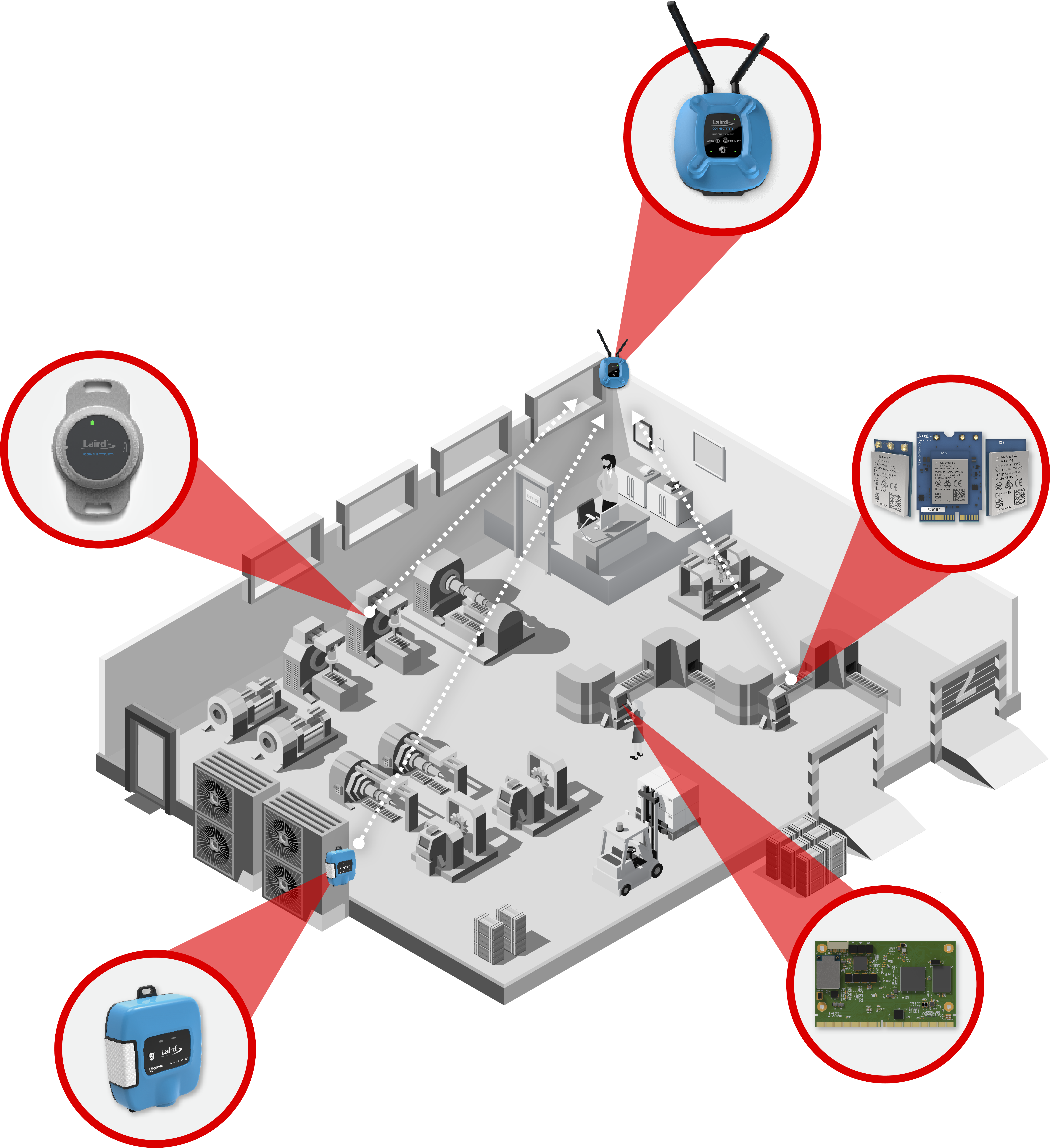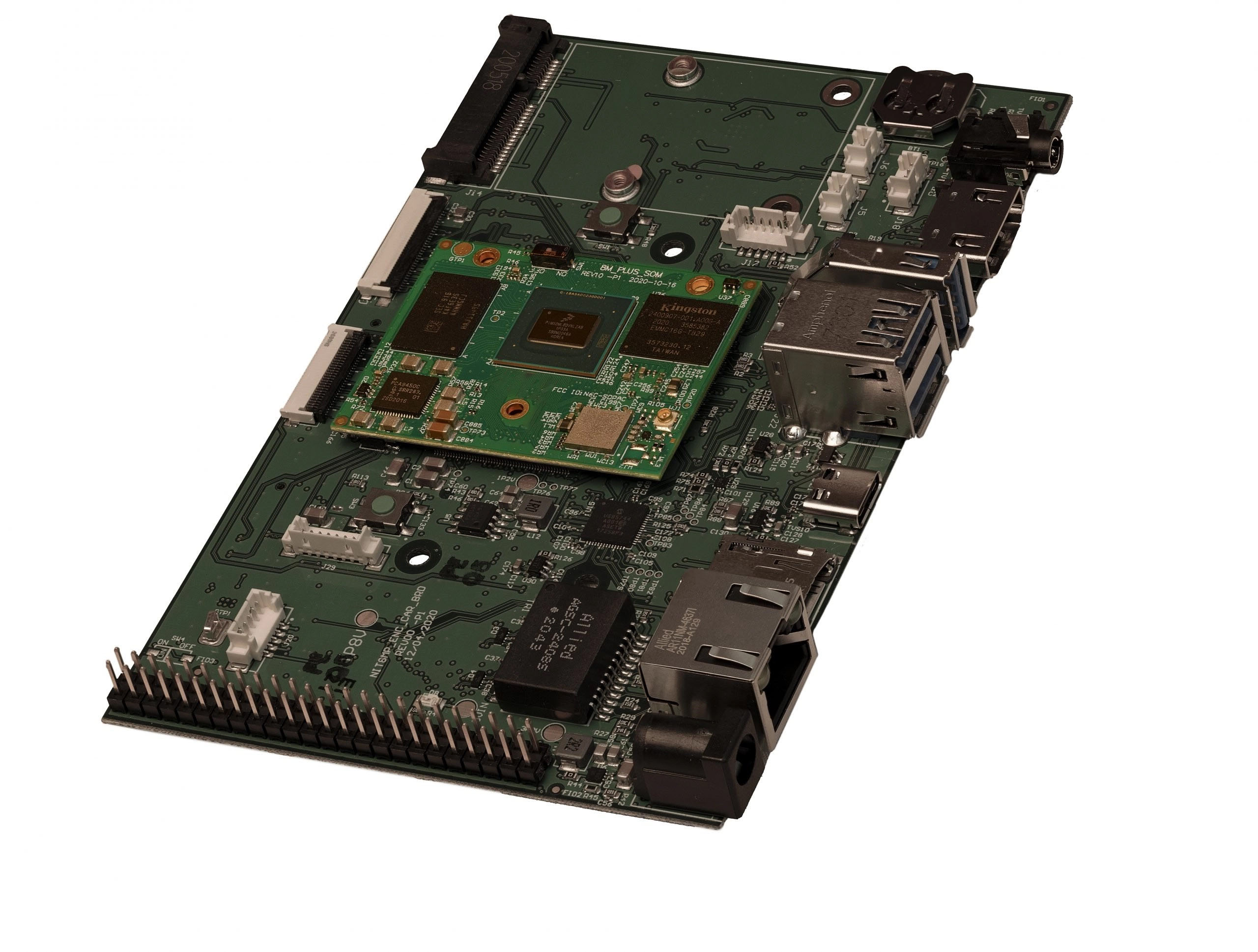
What is a System-on-Module?
A system-on-module (SOM) is a compact, fully-integrated circuit board that contains all the necessary components of a computer or other electronic system on a single module. It's designed to be plugged into or otherwise connected to a carrier board, which provides the external interfaces and connectors needed for the SOM to interact with the rest of the system or device. Key components typically included in a SOM are:
- Central Processing Unit (CPU): The CPU core, often an ARM-based processor for low-power applications or x86 for higher computational needs, acts as the computational heart. It executes the system software and application codes, and then orchestrates data processing workflows tailored to specific application demands.
- Memory Architecture: Incorporates volatile and non-volatile memory elements. Volatile memory typically comprises DDR3/DDR4 SDRAM for high-speed data access, critical for running applications and the operating system. Non-volatile memory, such as eMMC or NAND flash, is provisioned for persistent storage of the OS, firmware, and application binaries.
- I/O and Peripheral Interfaces: A comprehensive suite of I/O interfaces is embedded to ensure versatile connectivity options. This includes high-speed interfaces like USB 3.0/2.0, Gigabit Ethernet for network connectivity, and lower-speed interfaces like I2C, SPI, and UART for peripheral and sensor integration. High-definition multimedia interfaces, such as HDMI or LVDS, support sophisticated display and multimedia functionalities.
- Wireless Communication Modules: Advanced SOMs might embed wireless communication modules, integrating Wi-Fi, Bluetooth, and sometimes GNSS modules, to facilitate IoT-ready applications requiring remote data transmission and location services.
- Power Management ICs (PMICs): These integrated circuits are meticulously designed to manage and distribute power across the SOM’s components efficiently. They ensure operational stability across varying load conditions and manage power sequencing to prolong system reliability and battery life in portable applications.
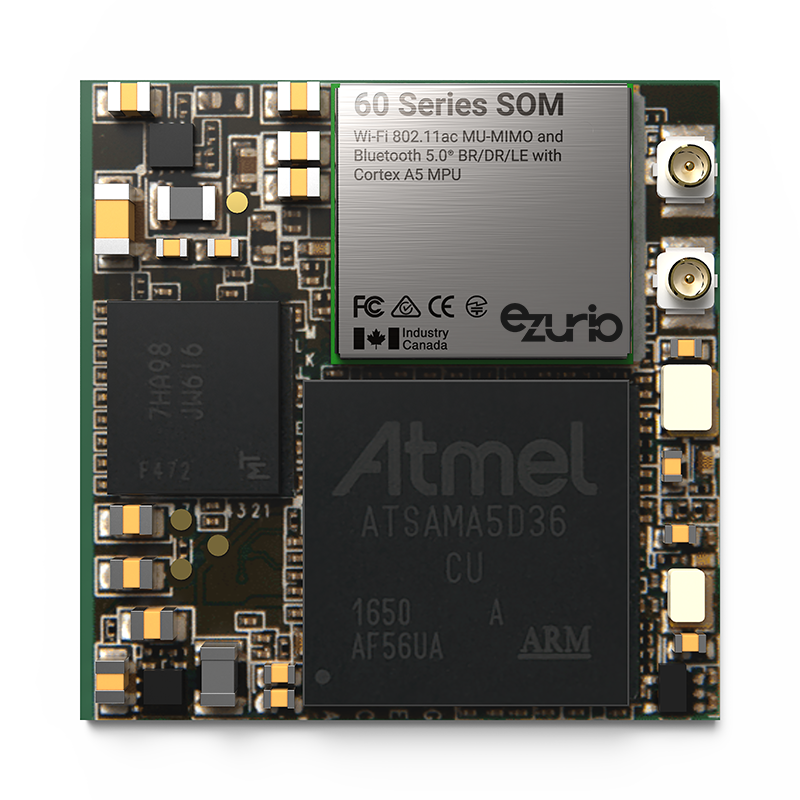
 Laird Connectivity is now Ezurio
Laird Connectivity is now Ezurio